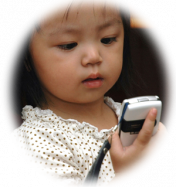
According to the “Instructional Design Handbook for Online Course Development” the first three components to a mobile classroom include:
1) Course Design
2) Interaction and Collaboration
3) Use of Technology
1) Course Design
2) Interaction and Collaboration
3) Use of Technology
Component 1. Course Design
1. COURSE DESIGN- LMS/ CMS- Learning Management/ Course Management Systems are often used in Mobile learning. Online virtual learning environments allows moderators and users to complete many tasks such as:
- Manage users, roles, courses, instructors, facilities, and generate reports
- Course calendar
- Student messaging and notifications
- Assessment and testing handling before and after testing
- Display scores and transcripts
- Grading of coursework and roster processing, including wait listing
- Web-based or blended course delivery
CMS/LMS Examples

www.joomla.org. Joomla is an open source CMS that allows users to "Build Web sites and powerful online applications" that can be used for many purposes.

www.moodle.org. Moodle is also an open source CMS with many great features. Moodle gives users the "best tools to manage and promote learning"

www.sakaiprojet.org. Sakai is a "Collaboration and Learning Environment" that is used nation wide to " enable powerful teaching and learning and research collaboration."
Component 2. Interaction and Collaboration
A key component to mobile learning is locating the tools that are required for interaction and collaboration. Because instruction is often asynchronous, finding a way for students to collaborate is essential. Below are 2 tools that can be used for collaboration in mobile learning.
Interaction and Collaboration Examples

www.skype.com. With this online tool, students can "Call, video call and instant message each other totally free" when working on a project. Sype is a downloadable program open to any user.

www.docs.google.com. One of Google's applications, Googledocs allows users to "edit online documents from any computer." Googledocs is a free application where users have the shared opportunity to edit and add to an online document.
Component 3. Use of Technology
There are an incredible amount of Web 2.0 tools that students and users can utilize in mobile learning. Technology is required in order for students to learn material on thier own. Listed below are 2 examples that may be used for online instruction.
Technology Examples

www.blogger.com. With Blogger, an free online blog application, users can "Share thoughts, photos, and more with friends and the world." Blogs can be a great educational tool for research and for mobile learning.

Mobile phones are a new developing mobile learning tool. Mobile phones contain applications for personal education in our community. In higher education systems, mobile phones can also be used for information exchange among professors and students. Also, mobile phone applications can be utilized in instruction if every student has access to such application.